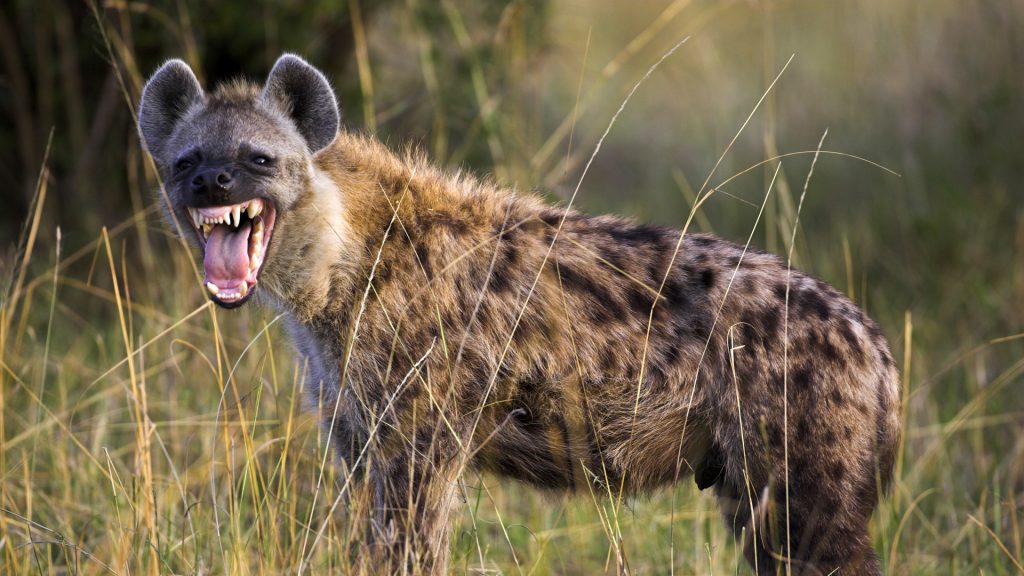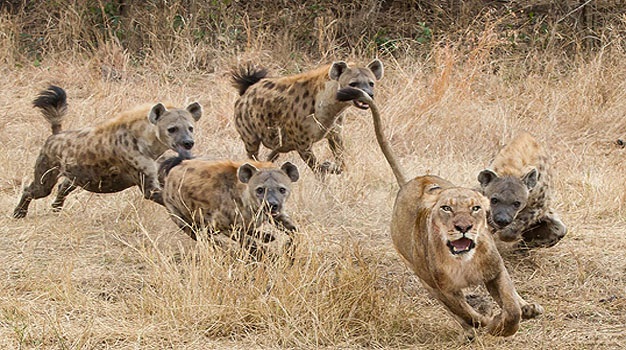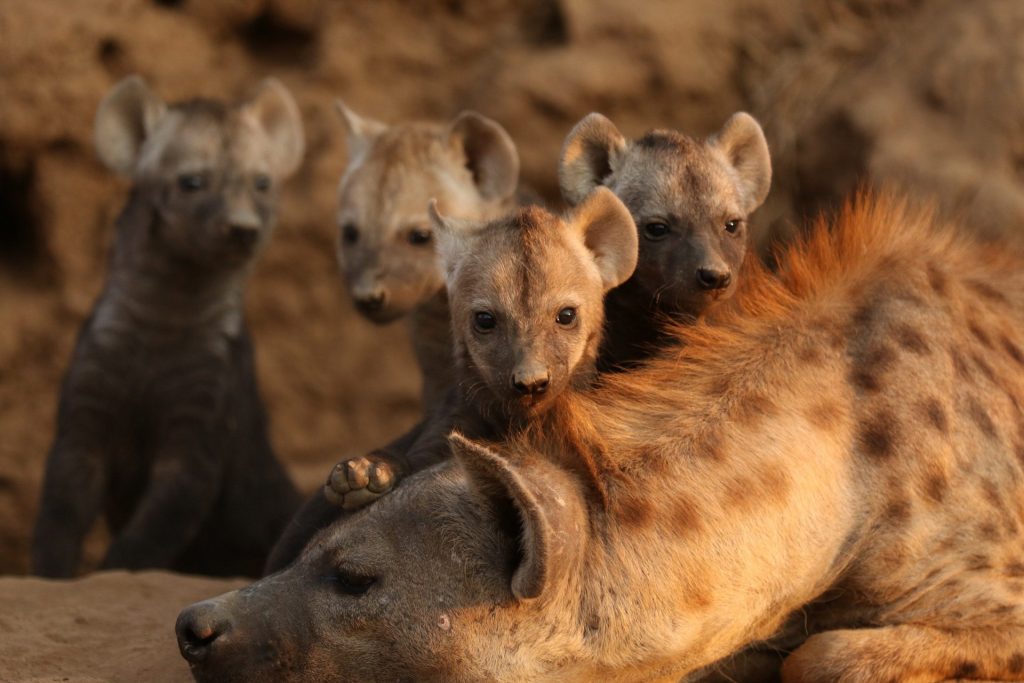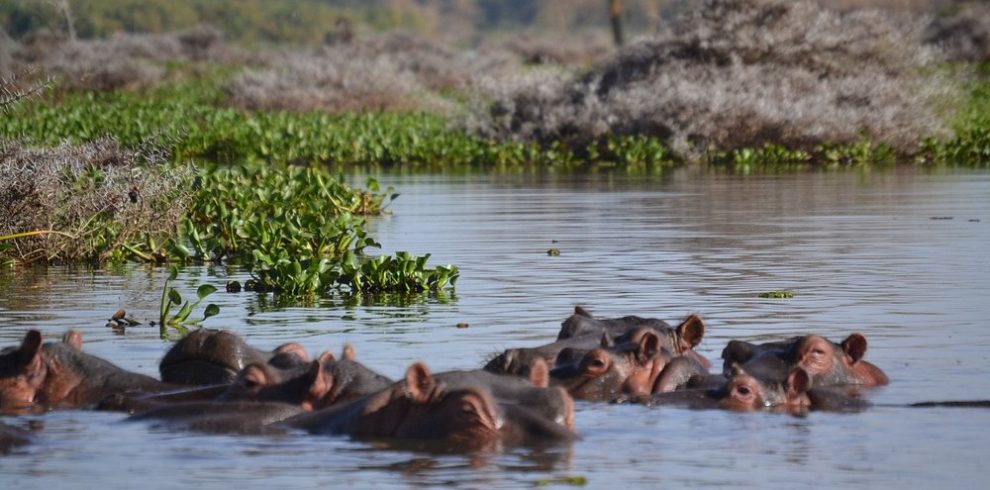
The spotted hyena, scientifically known as Crocuta crocuta, is a fascinating and often misunderstood creature that plays a crucial role in the ecosystems of sub-Saharan Africa. With its distinct appearance, complex social structure, and impressive hunting abilities, the spotted hyena is far more than the stereotypical scavenger that it is often portrayed as. Despite often being thought of in relation to scavenging behavior, these creatures are actually loads of unique characteristics, to the point of being really competent predators as well. In this article, we will delve into five fascinating facts about the spotted hyena, highlighting its role in the animal kingdom, its social behaviors, and its remarkable physical and intellectual abilities.
1. Complex Social Structure and Matriarchy

One of the most fascinating facts about the spotted hyena is its unique social structure. Unlike many other carnivores, spotted hyenas live in large social groups known as clans. Such a clan may comprise between 3 and 80 persons but the general distribution of members of a clan is often based on food and land supply. The clans are of high organization and work in a clear hierarchy, thus contributing to their survival and success.
What sets spotted hyenas apart from many other species is their matriarchal society. In spotted hyena clans, females are dominant over males, a rarity among carnivores. The top of the clan structure is nearly always a woman and the social status of the female decides the status of her child. The males tend to spend their lives in subordinate position to females but they must scale the social ladder by either allying with other males or demonstrating their prowess and prowess in life.
The mating system is highly favored with the female as well. In other instances, females will copulate with multiple males and the male that is able to crowd others out during the mating competition will sire the young. The matrilineal organization gives females tremendous authority over the resources as well as the decisions of the clan and this is believed to improve the survival prospects of their progeny.
This matriarchal system is quite unusual in the animal kingdom, where most species are male-dominated, making the spotted hyena’s social structure all the more intriguing and a key factor in its success as a species.
2. Highly Skilled and Efficient Hunters

Contrary to the common misconception that hyenas are only scavengers, one of the most fascinating facts about the spotted hyena is its exceptional hunting skills. While it is true that spotted hyenas will scavenge when the opportunity arises, they are also highly effective predators in their own right and hunt for food as a primary source of nutrition.
Spotted hyenas are known to hunt in coordinated groups, using teamwork and strategy to take down prey that is often much larger than themselves. They mostly hunt during early mornings or late evenings, during these times lighting conditions are favorable, temperatures are low, and their prey is exposed. The spotted hyena’s hunting technique involves stamina and endurance rather than speed and power. The animals are able to run continuously at a steady pace long distances up to 6 miles (10 kilometers) at a time giving them time to wear down, and pace out their prey prior to the kill. The technique is particularly successful in hunting of some large herbivores, like wildebeest, zebra, and impala.
Hyenas tend to act as a team circling, isolating their prey with their powerful jaws and sharp teeth before a kill is made. After choosing a target, the clan collaborates in order to pursue and exhaust the animal so that it becomes more prone to being caught. The intelligence and adaptability of these predators evidences itself with the group dynamic and a team effort applied to the hyena hunting process.
Research has shown that spotted hyenas have an exceptionally high success rate when hunting in groups. It has been seen to bring down the prey that would have otherwise not been able to be brought down by one individual hyena like large antelopes or even young buffalo. This ability to hunt cooperatively, along with their powerful bite and endurance, positions the spotted hyena as one of the most efficient predators in the African savannah.
3. Remarkable Communication Skills

Another fascinating fact about the spotted hyena is its highly developed communication system. Spotted hyenas are known to be extremely vocal animals, and they have a wide range of calls and vocalizations that they use to communicate with each other. These vocalizations help in preserving social relationships, organizing hunting parties and presenting dominance in the clan.
Hyenas are best known to emit the highest-pitched howl and are commonly known as they laugh, or whoop/giggle as it is usually referred. This vocalization has made hyenas a laughing animal, but it is far beyond a laughing effect as hyenas need it to be much more significant. The whoop is used in communicating with the other members of the clan over a long distance particularly when the terrain of a region would prove challenging. It assists hyenas in finding each other particularly where they have been scattered in the course of hunting or gleaning.
In addition to the whoop, spotted hyenas have a variety of other vocalizations, including growls, grunts, and snorts. The emotions transmitted are aggression, submission or excitement. An example is when a hyena wants to share a feeling of threat or power, the animal will either growl or grunt as a way of establishing itself in the social order. Most often younger hyenas also scream in high pitched voices to indicate that they are in distress, or calling out to their mothers.
What is brilliant about hyena communication is the fact that all this is highly sophisticated and it is suspected that the hyena employs this kind of communication to ensure that things are well maintained in their clan as well as to convey vital information in relation to the environment including about the presence of prey or attack by a predator.
4. Impressive Physical Strength and Adaptations

The spotted hyena’s physical capabilities are another key factor that contributes to its status as a top predator. One of the most notable physical traits of the spotted hyena is its incredibly powerful jaws. Hyenas are also known to have one of the most powerful bites in the animal kingdom and can apply a bite force of more than 1,000 psi (pounds per square inch), more than most of the larger predators such as lions and tigers.
This immense bite strength allows spotted hyenas to crush bones with ease, a key advantage when scavenging carcasses. Hyenas have been discussed as eating all parts of their preys including the bones, which are crushed by the forceful jaws of the hyenas. This ability to digest bones gives spotted hyenas an advantage over other scavengers, who may not be able to access the nutrient-rich marrow inside.
In addition to their strong jaws, spotted hyenas also have highly developed muscles and a robust physique, which aid in their hunting and scavenging efforts. Their large ears help them ascertain whether or not something caught their attention as to prey or enemy, especially being able to move at high speed with long muscular legs. Easily detecting other animals in their surroundings requires their developed sharp sense of hearing, and they are able to detect even the sounds that humans cannot hear, the steps of small rodents or the noises of a predator creeping up behind.
The combination of strength, endurance, and heightened senses makes the spotted hyena a formidable animal in both hunting and scavenging.
5. Cultural Misconceptions and Ecological Importance

One of the most fascinating aspects of the spotted hyena is how it is perceived in popular culture and how these perceptions contrast with its actual role in the ecosystem. Spotted hyenas are often portrayed as cowardly scavengers in folklore and popular media, with their “laughing” calls being used as a symbol of mockery or villainy. However, these misconceptions are far from the reality of the spotted hyena’s behavior and ecological role.
As we have seen, the spotted hyena is an intelligent and capable predator in its own right, not merely a scavenger. Hyenas also have a significant ecological niche that lets them, among others, control the number of herbivores and other prey animals. Their hunting, scavenging behaviors support the balance of the ecosystem by deterring overgrazing and disease.
Moreover, hyenas play a vital role in nutrient cycling. They have the ability to break down organic matter (otherwise requiring much longer to decompose) by eating bones and other hard materials thereby releasing the nutrients to be used by other species within the ecosystem. They are also effective as scavengers and thus littering of dead animals is not a problem as they handle it fast hence maintaining a clean and healthy environment.
Although the image of hyenas has been damaged by the myths and misconceptions surrounding them, they are important to the biodiversity of the savannah in Africa and other ecosystem in which they live. Their complex social structure, sophisticated communication methods, physical adaptations, and ecological contributions all paint a much different picture of the spotted hyena than the one often seen in popular culture.
Conclusion
The spotted hyena is a truly fascinating animal with a range of extraordinary traits that challenge the common myths and misconceptions surrounding it. From its matriarchal social structure to its impressive hunting abilities and vocal communication skills, the spotted hyena proves to be far more than just a scavenger. Its extreme physical adaptations and ecological significance put it in the spotlight as a high level predator and a central subject of the African ecosystem. These 5 fascinating facts about the spotted hyena demonstrate that this often misunderstood animal deserves both respect and admiration for its unique qualities and contributions to the natural world.






